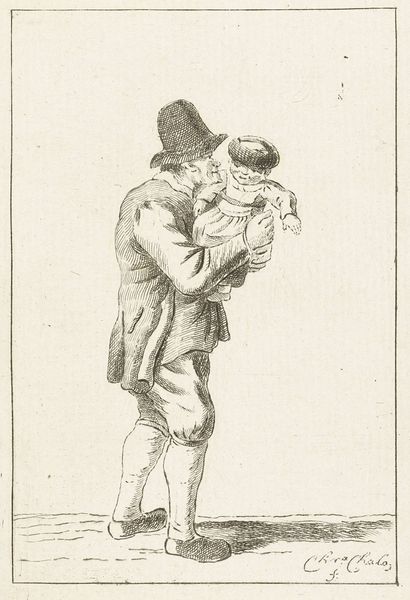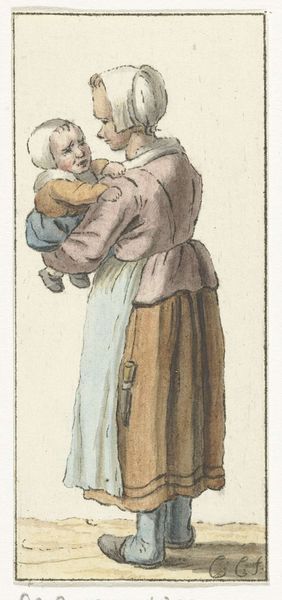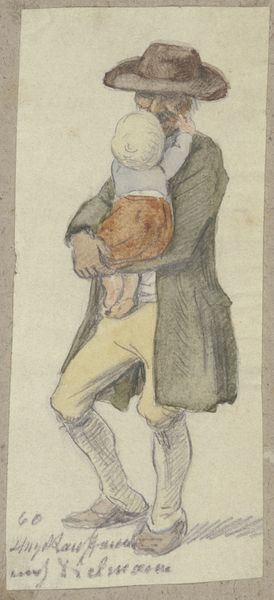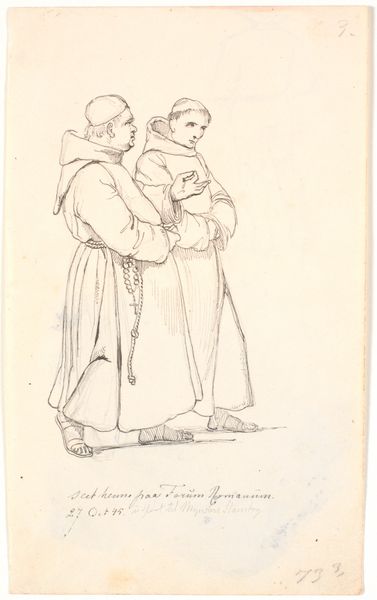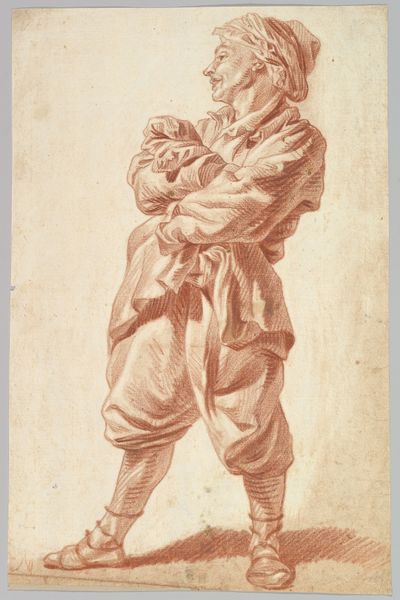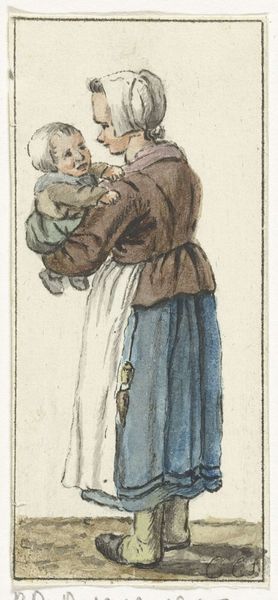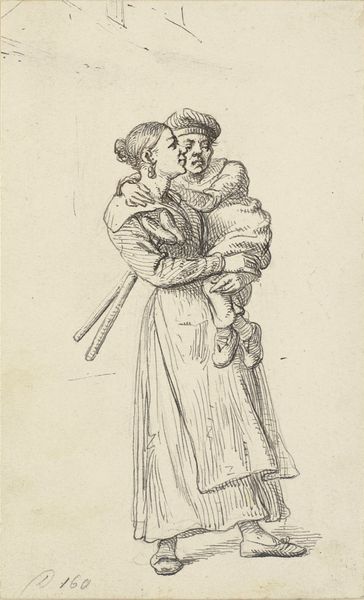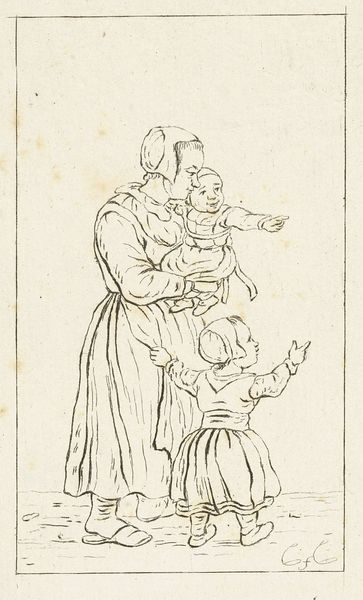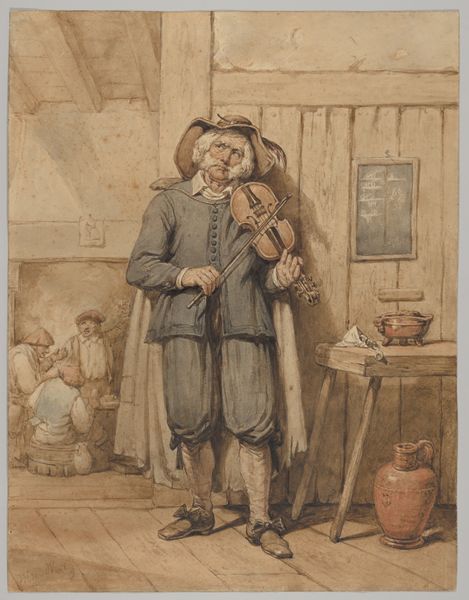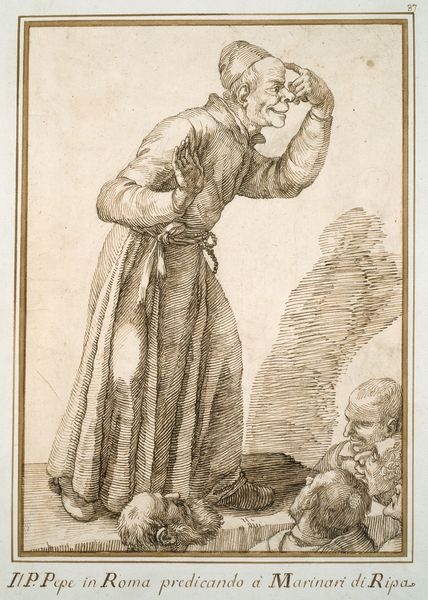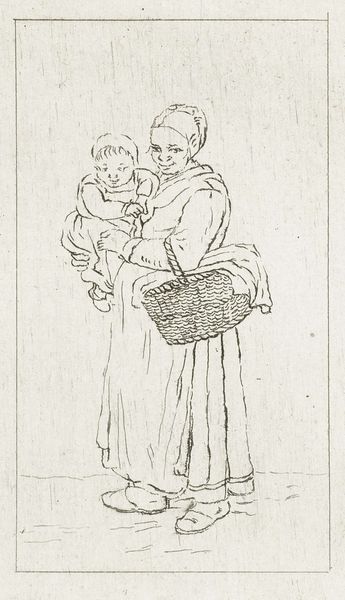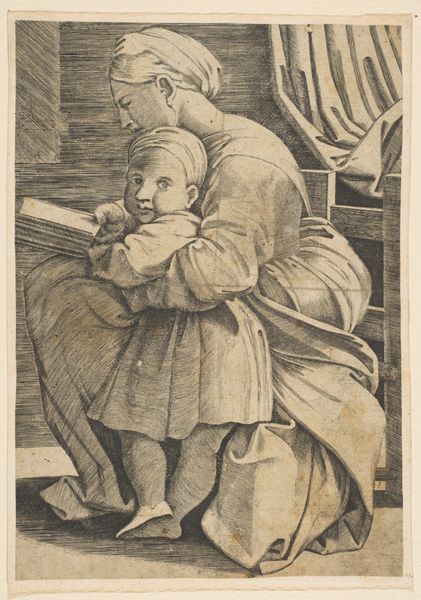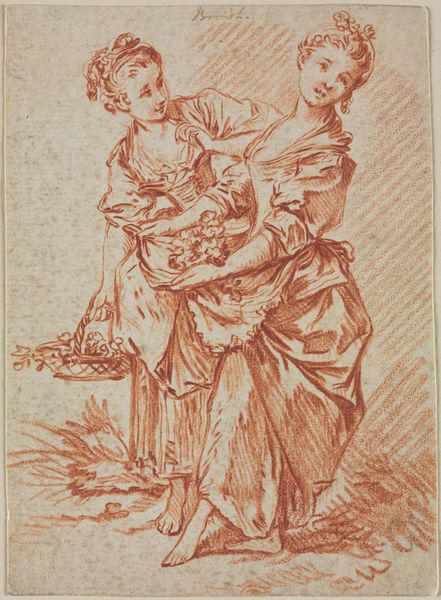
drawing, coloured-pencil, print
#
drawing
#
coloured-pencil
# print
#
figuration
#
child
#
coloured pencil
#
genre-painting
Dimensions: sheet: 3 5/16 x 2 1/16 in. (8.4 x 5.2 cm)
Copyright: Public Domain
Curator: This delightful piece before us is titled "Peasant with Child," a drawing from the 17th century, likely sometime between 1620 and 1685, by Herman Saftleven II. It is crafted with coloured pencil, and demonstrates Saftleven’s skill in genre scenes. Editor: The first thing that strikes me is the tenderness. The child is clinging so trustingly to the peasant's back. Despite the humble setting, there's a palpable warmth radiating from the pair. Curator: Yes, genre paintings like these gained popularity in the Netherlands during the Dutch Golden Age. They offered a glimpse into the everyday lives of ordinary people. In this period the growth of the merchant class enabled new patronage of art that valued familiar aspects of local experience. It certainly provides a counterpoint to the more grandiose history painting. Editor: I agree, and beyond the intimate connection between parent and child, what cultural symbols do you see resonating here? For example, his clothing immediately suggests rural labor, and the burden carried, which gives rise to the deeper theme of agrarian lifestyle, so close to nature. Curator: Absolutely. Saftleven uses the image of peasantry to depict an idyllic view of rural life, albeit one filtered through the lens of artistic convention and, perhaps, the sensibilities of an urban audience. These works weren’t straightforward documents of peasant life. Instead they carried loaded imagery concerning societal hierarchies. Editor: It’s remarkable how a seemingly simple drawing can convey so much about its era's societal structure. There is an ideal of human relations shown, I would contend. The way the figures take care of each other is something central to our human essence across eras, not lost to these historical dynamics of rural poverty. Curator: A crucial observation, connecting us to a broader, more timeless narrative embedded in genre scenes of that period. By portraying seemingly 'ordinary' people, Saftleven reflects an important facet of humanity that resonates even today. Editor: Indeed. It seems Saftleven’s delicate use of coloured pencil also draws attention to an intrinsic grace within familiar forms. I think I will look at genre art in museums quite differently now.
Comments
No comments
Be the first to comment and join the conversation on the ultimate creative platform.
